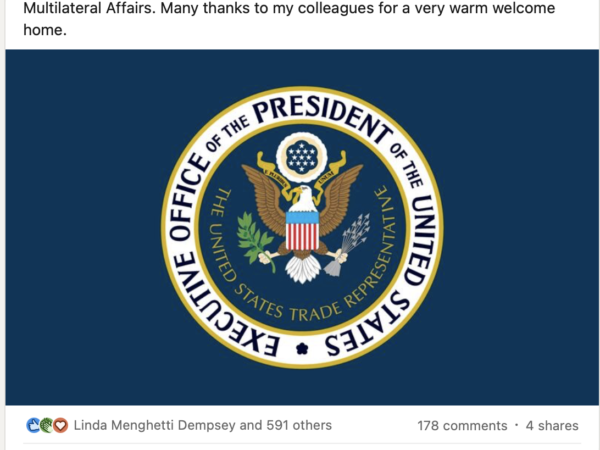Central America can thrive by catching the new digital wave
BY MATTHEW ROONEY AND ANDREA DURKIN, OPINION CONTRIBUTORS — 05/20/19 10:00 AM EDT
United States border patrol recently dealt with the highest number of asylum seekers reaching our southern border, while Congress and the administration were offering short term solutions to a long term problem. These men, women, and children are leaving the Northern Triangle of El Salvador, Honduras, and Guatemala in search of a future without poverty, violence, and corruption. It is important that we address the overflow of migrants, but we also need to focus on how we can better the region.
To enrich the economies of the Northern Triangle, digital connectivity and widespread use of financial technologies need to be part of the solution. They are essential ingredients for the region to compete in the global economy. They are also critical to lifting its citizens out of the poverty and desperation they feel to leave their homes. Central American countries are small economies and societies. Digital connectivity brings buyers to the region and shows Central American business offerings to the world.
Government services delivered electronically significantly improves transparency and reduces opportunities for corruption, which would help restore public confidence and access to government services. Globally competitive industries are rapidly adopting digital technologies and data driven innovation. Cloud computing and the “internet of things” can expand supply chain opportunities for companies that keep pace. 3D printing is also transforming the geography of manufacturing. Online commerce and digital trade opportunities are game changers for small and midsize businesses, allowing them to expand access to customers.
Helping the Central American governments design a regional regulatory environment to attract telecommunications, broadband service, financial technology, and other banking services is necessary to build their digital ecosystem. The United States government along with private businesses should help Central America develop and then implement a new digital strategy. In Central America, only 35 percent of the population has 4G coverage, comprising a mere 5 percent of regional connections. In the United States, 98 percent of Americans have had 4G coverage for four years. Investments in mobile internet infrastructure will improve networks in marginalized communities in the Northern Triangle.
A digital strategy would also increase the portion of the population able to receive electronic payments from employers and the government, as well as transfers from family and friends through mobile phones. Moving more individuals into the digital financial services system enables them to build assets and collateral that can be mobilized into productive activities that can generate income. Particularly across the Northern Triangle, criminal violence rooted in drug trafficking has metastasized into a challenge that is undermining governance, hobbling economic growth, and driving emigration. There is no question that the immediate crisis demands a response focused on law enforcement. But the only lasting solutions are those that provide opportunity and employment for Central Americans.
Why should the United States support such market reforms? Why should the United States prioritize a digital plan for Central America? Because we are already asking Central American governments to handle a lot right now by improving law enforcement training, fighting organized crime, and delivering housing, health care, education, and road infrastructure, all of which are desperately needed. We do not want China or Russia stepping in as their business partner of choice in building critical infrastructure.
The United States government and American businesses can support a digital evolution across the Northern Triangle in ways that constitute a logical extension to our previous federal assistance programs and in ways that demonstrate tangible and high rates of return for the investment. Enabling internet access on mobile phones and encouraging the diffusion of digital financial technologies are indeed very specific ways to help improve quality of life and create economic opportunities for all Central Americans. If channeled into a broader digital strategy for the region, these types of approaches could have a lasting and transformational impact. It cannot wait. The region needs to catch the digital wave now.
Matthew Rooney is director of economic growth with the George Bush Institute. Andrea Durkin is a consultant with the George Bush Institute.




